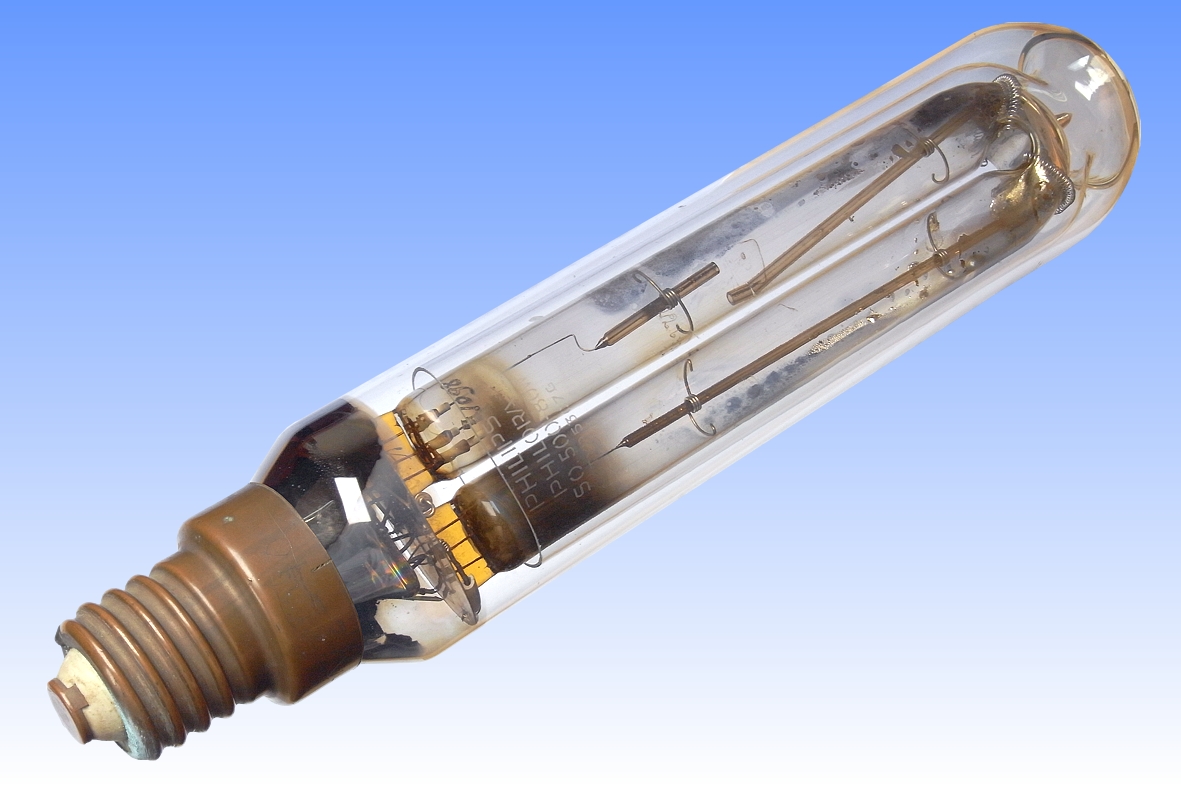
|
Philora SO500 Self-Starting Low Pressure Sodium |

This lamp is a type developed by German Osram around 1936. It was the first model to make use of an integral vacuum jacket, and employs several features to enable it to strike at ordinary mains voltages. Firstly it employs a shorter discharge tube of larger diameter than normal. Secondly it contains two auxiliary electrodes to strike the discharge. These are connected via a pair of electrical resistances in the outer jacket. When energised a small discharge strikes at one end of the tube, between the main and first starting electrode. Then a second discharge strikes between the two probes at the U-bend. Finally the discharge strikes across the whole lamp. Further details of the construction can be found in the LPS Technical Section of this site.
Owing to the fact that both the lifetime and efficacy of this lamp type was quite considerably less than the competing SO/H design, it proved not to be a commercial success. It is believed that by 1940 it had been discontinued.




| Manufacturer: | NV Philips Gloeilampenfabrieken | |
| Lamp Power: | 80 Watts | |
| Lamp Current: | 1.2 Amps | |
| Lamp Voltage: | 75 Volts | Breakdown 190V max. |
| Cap Type: | E40s/45 | Solid Copper |
| Bulb Finish: | Clear | Soft glass arc tube |
| Bulb Type: | Inner: TU-24 | Outer: T-70 |
| Overall Length: | 340 mm | |
| Light Centre Length: | ||
| Discharge Length: | 350 mm | |
| Electrodes: | C-8 Tungsten | BaCO3 emitter |
| Atmosphere: | Na | 99% Ne, 1% Ar | Outer: Hard Vacuum |
| Luminous Flux: | 5,000 lm (@ 100 hrs) | (5,500 Hefner Lumens) |
| Luminous Efficacy: | 62.5 lm/W (@ 100 hrs) | (68.8 Hlm/W) |
| Colour Temperature & CRI: | CCT: 1700K | CRI: Ra-44 |
| Chromaticity Co-ordinates: | CCx: 0.574 | CCy: 0.425 |
| Burning Position: | Vertical Base Up ± 95° | |
| Rated Lifetime: | Not Published | |
| Warm-up & Re-strike Time: | 20 minutes | Instantaneous |
| Factory: | Eindhoven | The Netherlands |
| Date of Manufacture: | Circa 1935-1940 | |
| Original & Present Value: | Unknown | |
